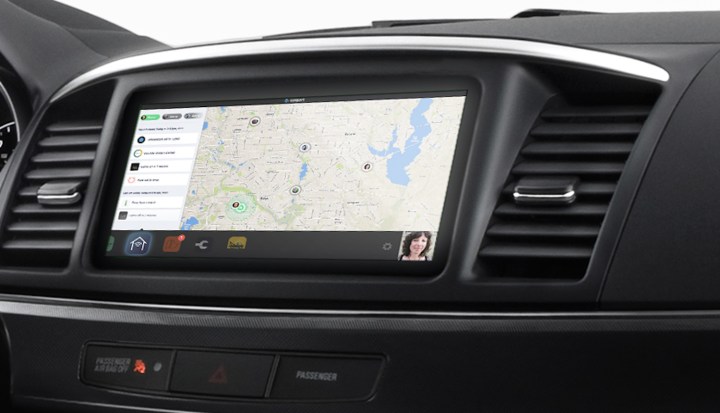
Today at the 2015 Frankfurt Auto Show, Vinli announced Carport, a cloud-based system that packs all these features seamlessly into the dashboard of your vehicle.
The main difference between Carport and the Vinli adapter is that Carport will be installed by auto manufacturers and work within the dashboard infotainment system. From here, drivers can have access to the same app suite that Vinli offers on the phone, but in a more integrated, streamlined manner.

Carport has a few neat tricks built in even without loading up on third party apps. Carport Home Connect links your car up with smart home products like the Nest thermostat and Samsung SmartThings devices. Leaving and arriving then initializes functions like turning heat up or switching on security cameras.
Carport Beagle will let households with multiple cars keep track of each other, not only by mapping thier location, but also with alerts that inform cautious parents that their pride and joy went over a pre-set speed limit, for example. The location services also connect to a roadside assistance network that can be on call with the press of a button in case users encounter any automotive mishaps.

To prevent those, Carport has My Service Shop that keeps tabs of maintenance milestones on a personalized timeline, giving drivers a visible graphic of when they last changed the car’s oil, rotated tires, or swapped a battery. There’s even a mileage ticker that counts down to the next service interval to help avoid overshooting it.
It all sounds pretty handy, but it’s still too early to know which auto manufacturers will carry Vinli in their vehicles or how it works in the real world. Either way, adding the car into a network of smart devices further supplants the car as more than a means of conveyance, but one of the most versatile mobile devices in our lives today.


